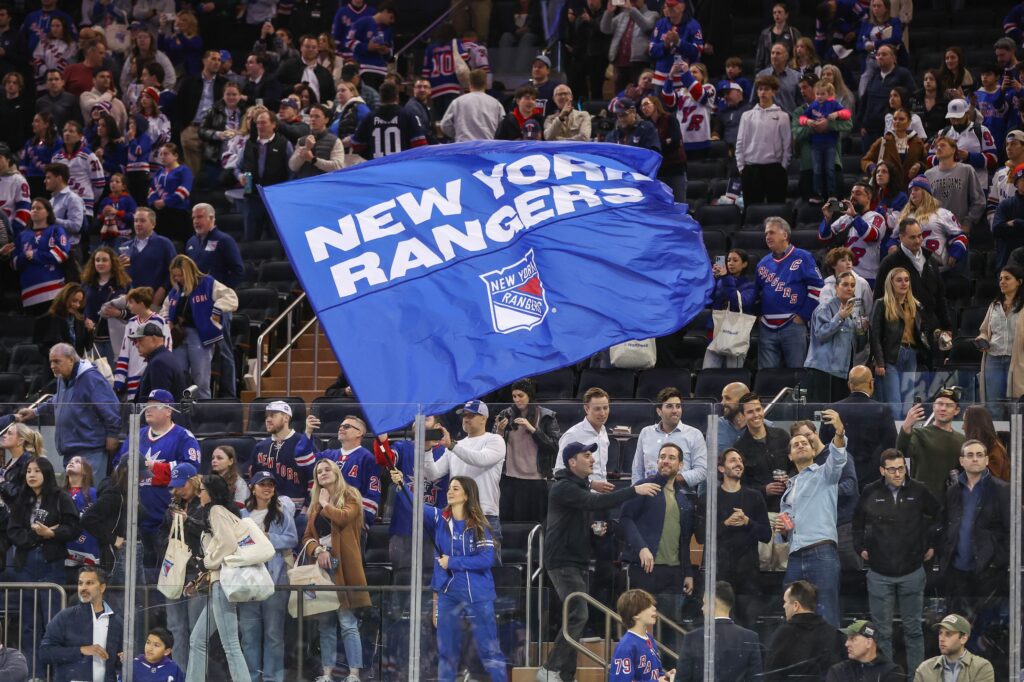The fall was as swift as it was brutal. One season you’re hoisting the Presidents’ Trophy, the toast of the NHL. The next, you’re on the outside looking in, cleaning out your lockers in April while 16 other teams chase the Cup. For the New York Rangers, the 2024-25 campaign wasn’t just a disappointment; it was, as one source put it, a “complete and utter disaster.” A historic collapse that saw them join their own 1992-93 predecessors as the only teams to go from the league’s best regular season record to missing the playoffs entirely.
Now, as the crisp autumn air signals the start of the 2025-26 training camp, the Rangers are a franchise at a crossroads. The negativity and off-ice drama of last season precipitated a seismic offseason shift. Gone are longtime core pieces like Jacob Trouba, Barclay Goodrow, Kaapo Kakko, and Filip Chytil. In their place is a re-tooled roster, a mountain of expectations, and a new voice behind the bench tasked with picking up the pieces. This isn’t just another training camp on Broadway; it’s the dawn of a new, high-stakes era. The questions are plentiful, the pressure is immense, and the storylines are compelling.
Sully’s System: A New Blueprint on Broadway
When you fire a coach who just led you to the league’s best record a year prior, you can’t miss on his replacement. In hiring two-time Stanley Cup champion Mike Sullivan, the Rangers believe they’ve found not just a new coach, but a new identity. Sullivan arrives with a well-earned reputation for demanding discipline, defensive accountability, and a structured system that suffocates opponents. His philosophy, built on aggressive puck support and limiting high-danger scoring chances, is a world away from the run-and-gun chaos that sometimes plagued the Blueshirts in recent years.
This shift is arguably the single most important storyline heading into the season. The expectation is that Sullivan’s structure will provide a stable foundation that was sorely lacking last year. For a team that often left its star goaltender out to dry, a system that prioritizes defensive positioning and collective responsibility could be a godsend. Sullivan is seen as “the right coach at the right time,” a figure capable of instilling the mental fortitude required to overcome last season’s collapse. His first and most critical task will be getting a locker room full of returning players and new faces to buy in from day one, erasing the stench of last season’s failure and forging a new, resilient identity.
The $92 Million Question and Lafrenière’s Big Bet
No two players will be under a more intense microscope this fall than Igor Shesterkin and Alexis Lafrenière, both of whom are beginning massive new contracts.
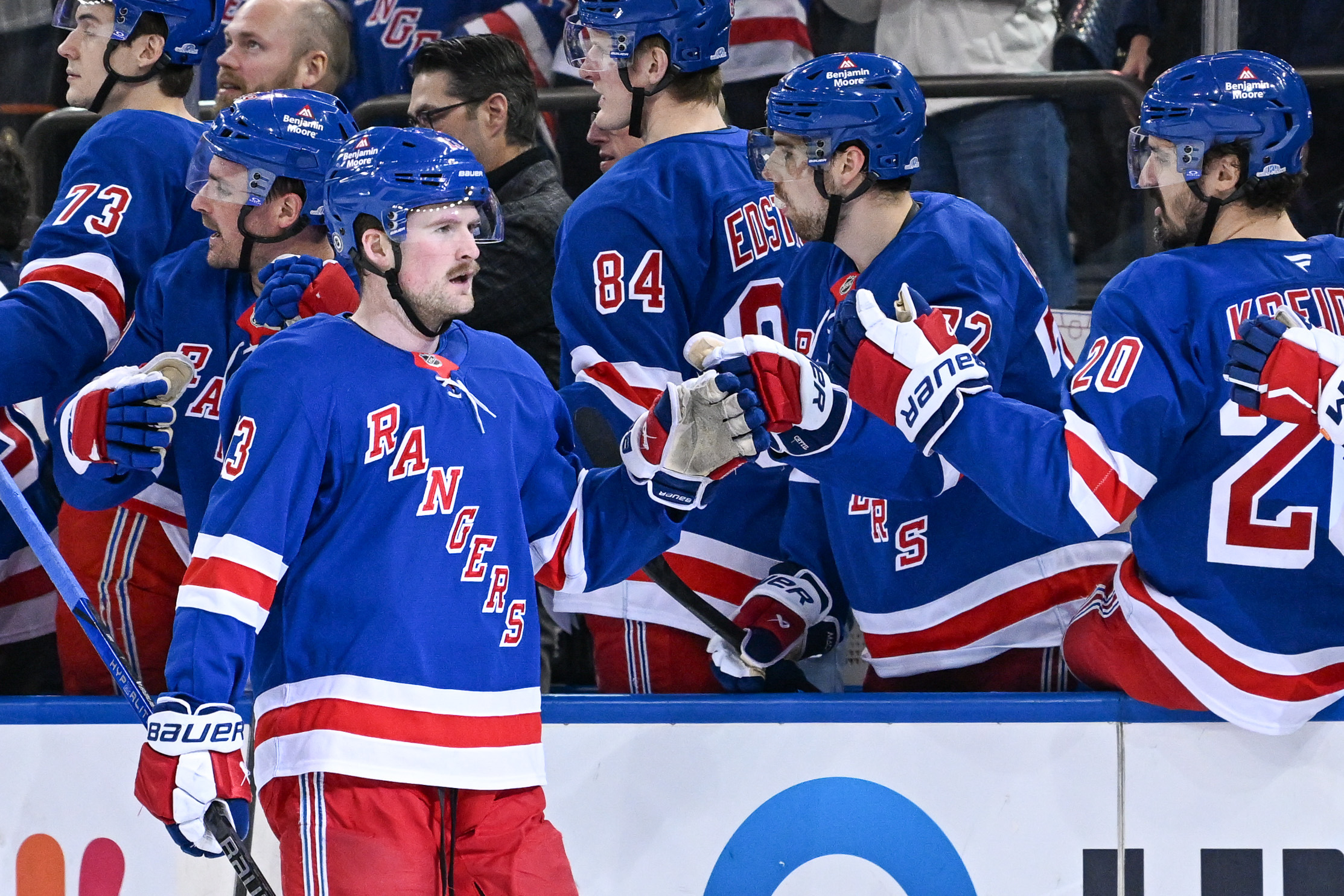
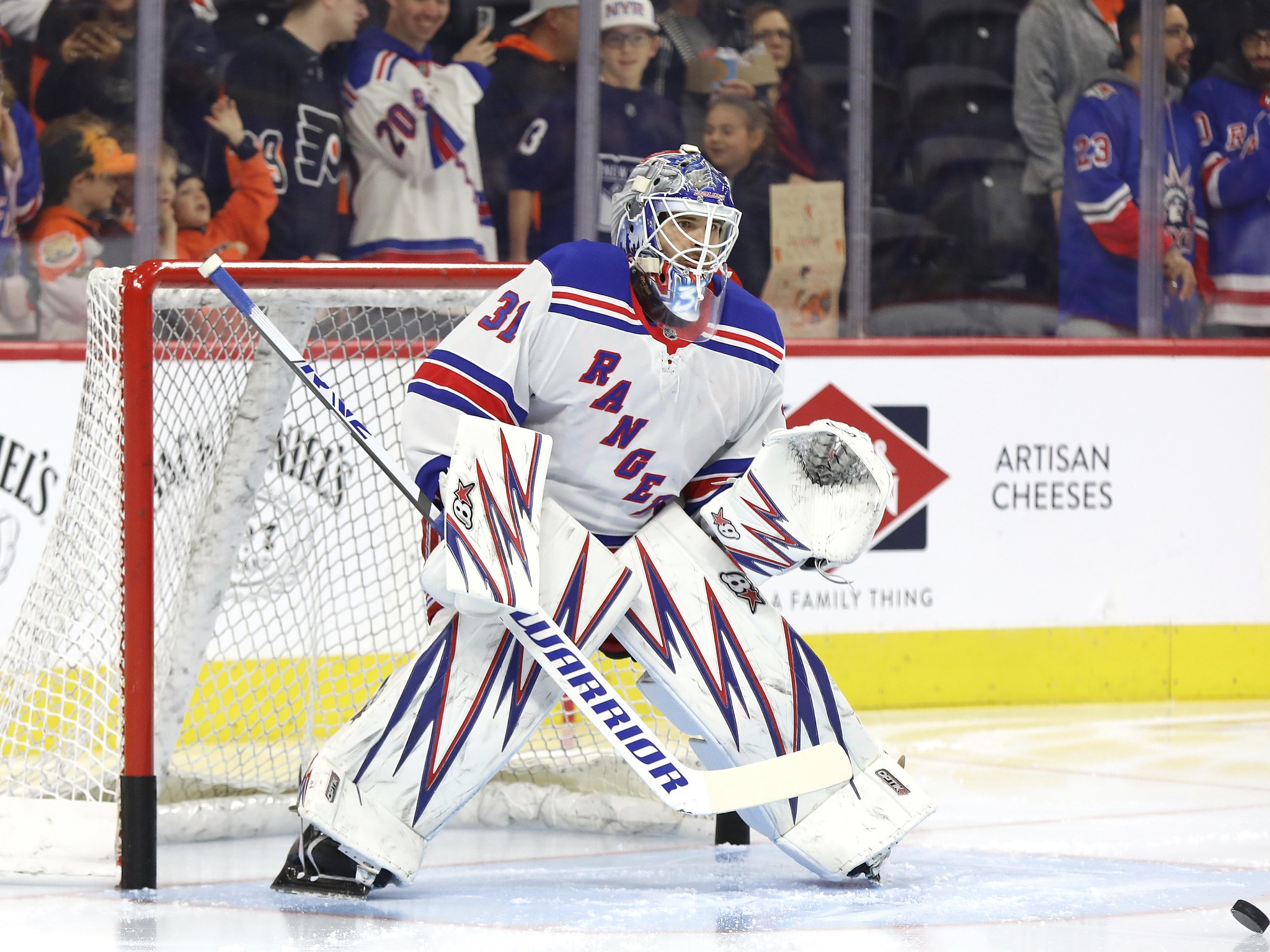
For Shesterkin, the pressure is astronomical. He enters camp as the highest-paid goaltender in NHL history, the ink still fresh on a staggering eight-year, $92 million contract ($11.5 million AAV). That kind of money doesn’t just buy saves; it buys expectations of consistent, series-stealing brilliance. The problem? His play has trended in the wrong direction since his Vezina-winning campaign in 2021-22. Last season was a statistical nadir, with a career-worst 2.86 goals-against average and a .905 save percentage. He has to prove he is worth the record-setting investment. While Sullivan’s defensive system should theoretically ease his burden, the onus is on Shesterkin to rediscover the elite form that once made him the undisputed best goalie on the planet. Every soft goal, every shaky start will be magnified by that colossal cap hit.
Also on the EDGE – Shesterkin’s Historic Gamble and the Rangers’ Narrowing Window
Meanwhile, Alexis Lafrenière cashed in on the promise of his 2023-24 breakout season (28 goals, 57 points), signing a seven-year extension worth $7.45 million annually. Unfortunately, his follow-up performance was a step backward, as he regressed to just 17 goals and 45 points. The excuses, however, are now gone. With the departure of Chris Kreider, a prime spot in the top-six and, crucially, a permanent home on the top power-play unit are his for the taking. This is the opportunity he—and the fans—have been waiting for. The organization has backed him with term and dollars; now it’s time to deliver the 60-plus point production of a top-line winger. Training camp will be his first chance to demonstrate that last year was a blip, not a trend.
Forwards in Flux: The Zibanejad Conundrum
Beyond the big contracts, the most fascinating tactical puzzle for Mike Sullivan lies with his forward group, specifically with Mika Zibanejad. For the past two seasons, Zibanejad’s production has been on a downward slide, culminating in his lowest point total in a full, non-COVID season since 2017-18. A mid-season move, however, seemed to unlock something. Shifted from his natural center position to the right wing on a line with J.T. Miller, Zibanejad exploded, potting 11 goals and 33 points in his final 32 games.
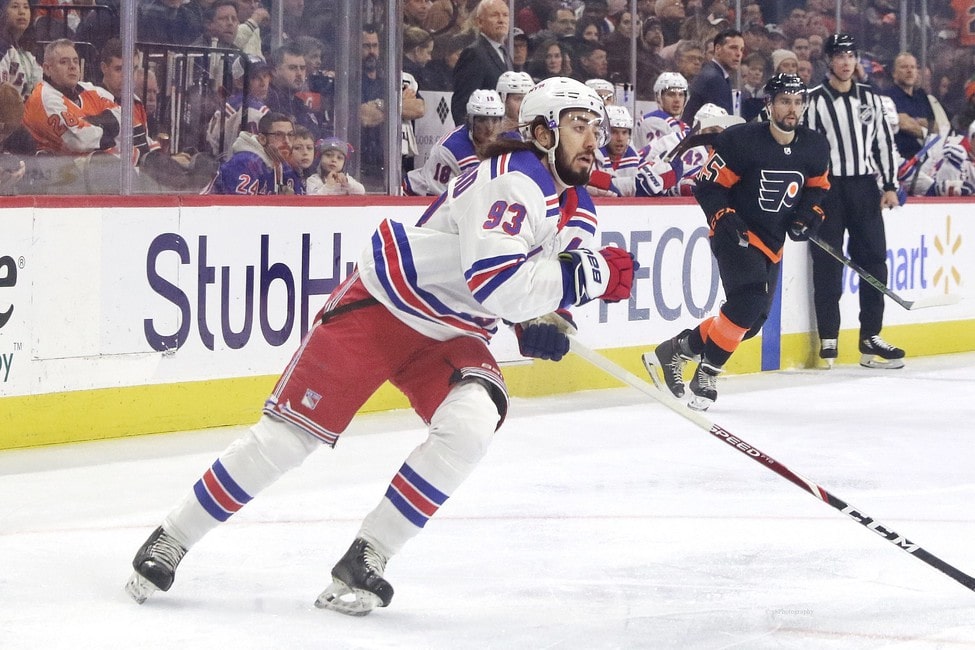
This presents Sullivan with a significant dilemma right out of the gate. Do you keep Zibanejad on the wing, where he clearly found a new level of comfort and offensive chemistry? Or do you move him back to center to give the Rangers an enviable 1-2-3 punch down the middle with Miller and Vincent Trocheck? The ripple effect of this decision cannot be overstated. Playing Zibanejad on the wing maximizes his scoring potential but potentially eviscerates the team’s center depth, creating a significant hole on the third line. It’s a classic case of what’s best for the player versus what’s best for the team, and Sullivan’s choice will be a defining feature of the Rangers’ offensive attack.
Also on the EDGE – Panarin Predicament: New York Rangers’ Billion-Dollar Question
Prospect time?
A perennial criticism of the Rangers organization has been its inability to properly develop high-end forward prospects. Too often, skilled young players have been stapled to the bench for a defensive miscue or buried in a bottom-six role with limited offensive opportunities. This year, that philosophy must change.
The trio of Gabriel Perreault, Brennan Othmann, and Brett Berard represent the next wave of Ranger offense, and their integration is paramount. Perreault, the team’s top prospect, is a supremely skilled playmaker who was bafflingly benched after just five NHL games last season. Othmann and Berard have shown flashes but need a consistent runway to prove they can be impact players at this level. The readiness of these “kids” for prime time is a legitimate concern, but it’s a concern that can only be answered with ice time. This is a major test for Sullivan. Will he show faith in his young talent and live with the inevitable growing pains, or will he revert to the old organizational habit of mistrust? The ability of these young forwards to seize roles—whether in the top-six or on a re-imagined third line—is crucial for the team’s long-term success.
Rebuilding the Blue Line
It wasn’t just the coaching staff that saw a complete overhaul; the Rangers’ defense corps is virtually unrecognizable. The departures of captain Jacob Trouba, Ryan Lindgren, and K’Andre Miller represent a fundamental shift in the identity of the blue line. In their place arrives a host of new faces, including Vladislav Gavrikov, Will Borgen, Urho Vaakanainen, and Carson Soucy.
On paper, this group has the potential to be much improved. Gavrikov is seen as a “massive upgrade,” a steady, reliable partner who should be a perfect complement for a hopefully resurgent Adam Fox. With Fox looking to bounce back from a “down” year by his lofty standards and Braden Schneider finally healthy, the top of the defensive depth chart looks solid. The key will be how the new pieces slot in behind them. Borgen brings physicality, but the reliability of the bottom half of the defense remains a question mark. More than any other unit, their success will be tied to how quickly they can grasp Sullivan’s defensive system and build chemistry as a cohesive six-man unit.
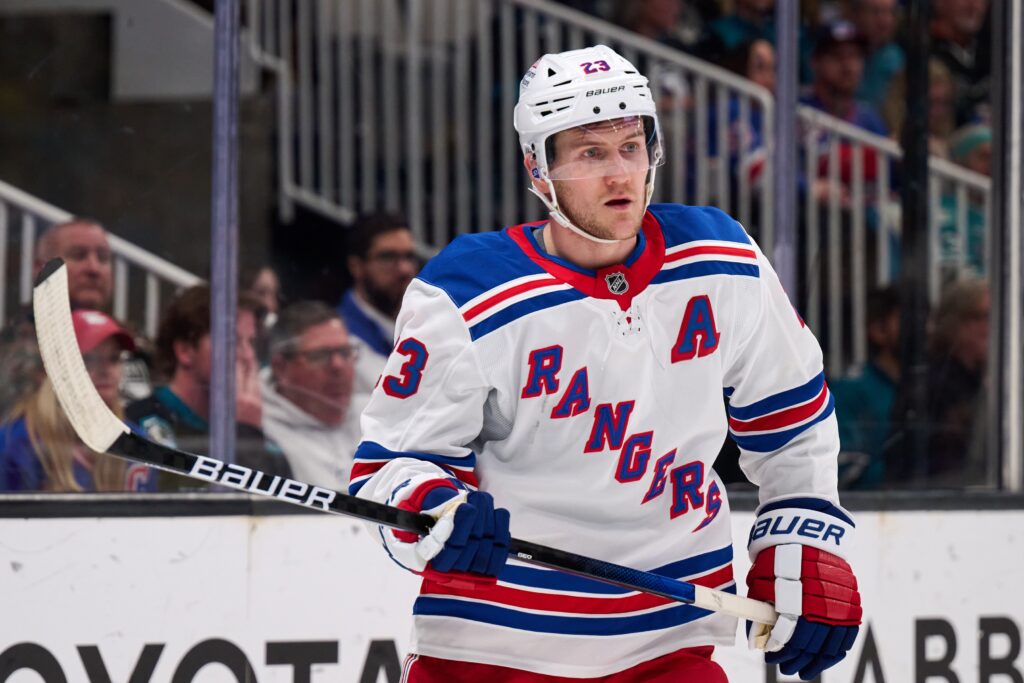
The Achilles’ Heel? Decoding the Bottom Six
If there’s one area that could derail the Rangers’ bounce-back aspirations, it’s the composition of the third line. This is where the Zibanejad decision looms largest. If he remains on the wing, the Rangers’ center depth becomes alarmingly thin behind Miller and Trocheck. The current options for the third-line center role, such as Juuso Parssinen or Jonny Brodzinski, are described as “dicey” at best.
This creates a line without a clear identity. Is it a checking line? A scoring line? The fear is that it becomes a black hole, consistently losing its matchups and bleeding chances against. This could force Sullivan’s hand, perhaps compelling him to move Trocheck into that 3C role or experiment with a powerful, physical player like Will Cuylle in the middle. After a breakout season where he posted 20 goals and a team-leading 301 hits, finding the right role for Cuylle is another key camp storyline. Unless a clear and reliable solution emerges for the third line, it threatens to be a “mess” that undermines the strength at the top of the lineup.
Final Verdict
From the crease out, the Rangers enter the 2025-26 season facing a gauntlet of questions. Can their record-setting goalie play up to his contract? Can their new coach instill a winning culture and a sound structure? Can their young players finally break through? The answers will begin to reveal themselves in training camp. For a team desperate to wash away the bitter taste of a historic failure, the work starts now. This is more than a season of redemption; it’s a fight for the future direction of the franchise. And it all begins on the ice this fall.
Created with the aid of Gemini AI
